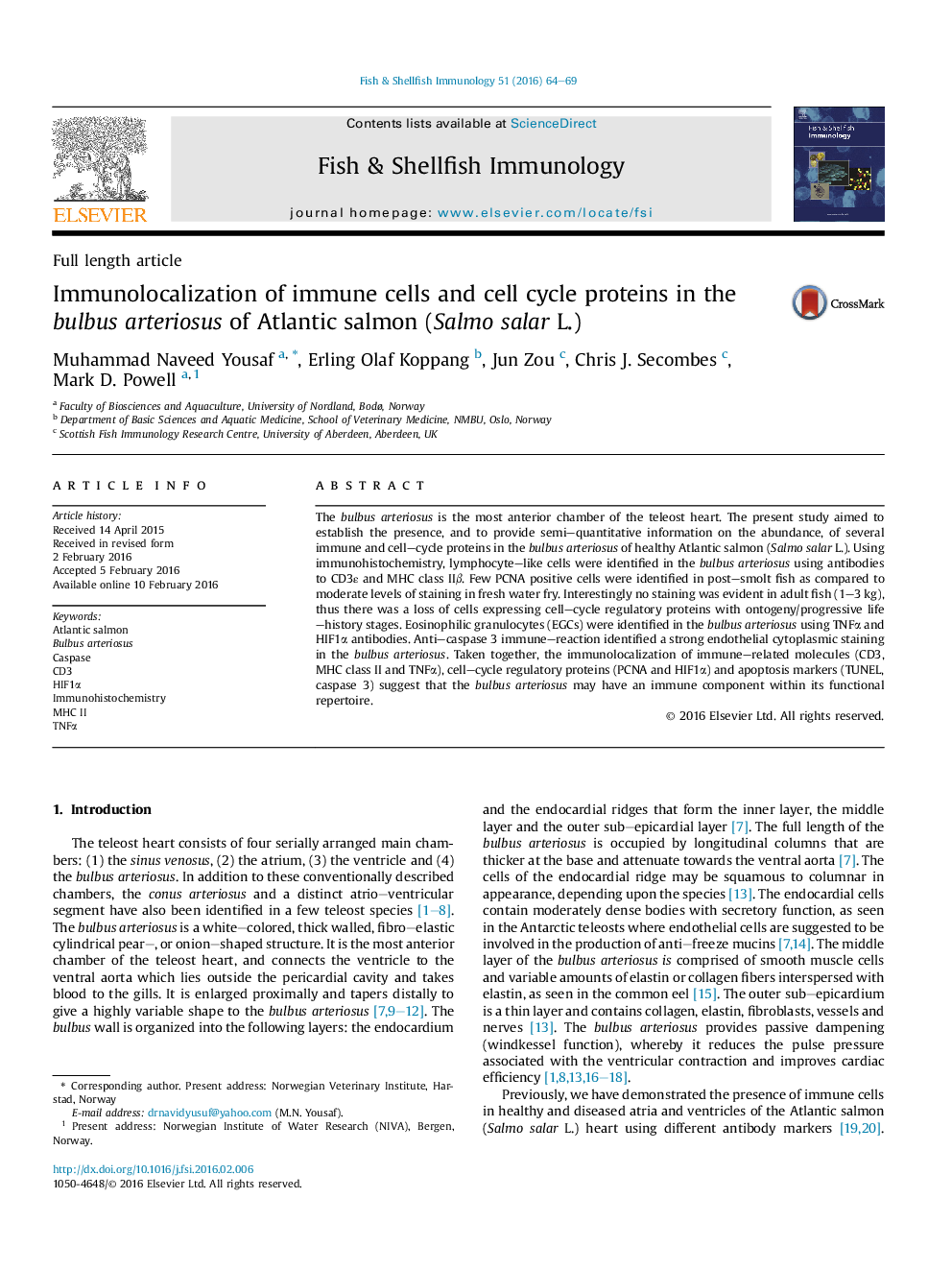| Article ID | Journal | Published Year | Pages | File Type |
|---|---|---|---|---|
| 2430715 | Fish & Shellfish Immunology | 2016 | 6 Pages |
•Immunolocalization of immune–related molecules, cell–cycle regulatory proteins and apoptosis markers were tested in the bulbus arteriosus of non-diseased Atlantic salmon.•Lymphocyte-like cells were identified using CD3 and MHC class II antibodies.•TNFα+ and HIF1α+ antibodies identified moderate levels of eosinophilic granulocytes.•Moderate levels of PCNA+ cells were identified in fresh water fry suggesting cell proliferation.•The findings suggest that the bulbus arteriosus may have an immune component within its functional repertoire.
The bulbus arteriosus is the most anterior chamber of the teleost heart. The present study aimed to establish the presence, and to provide semi–quantitative information on the abundance, of several immune and cell–cycle proteins in the bulbus arteriosus of healthy Atlantic salmon (Salmo salar L.). Using immunohistochemistry, lymphocyte–like cells were identified in the bulbus arteriosus using antibodies to CD3ε and MHC class IIβ. Few PCNA positive cells were identified in post–smolt fish as compared to moderate levels of staining in fresh water fry. Interestingly no staining was evident in adult fish (1–3 kg), thus there was a loss of cells expressing cell–cycle regulatory proteins with ontogeny/progressive life–history stages. Eosinophilic granulocytes (EGCs) were identified in the bulbus arteriosus using TNFα and HIF1α antibodies. Anti–caspase 3 immune–reaction identified a strong endothelial cytoplasmic staining in the bulbus arteriosus. Taken together, the immunolocalization of immune–related molecules (CD3, MHC class II and TNFα), cell–cycle regulatory proteins (PCNA and HIF1α) and apoptosis markers (TUNEL, caspase 3) suggest that the bulbus arteriosus may have an immune component within its functional repertoire.
